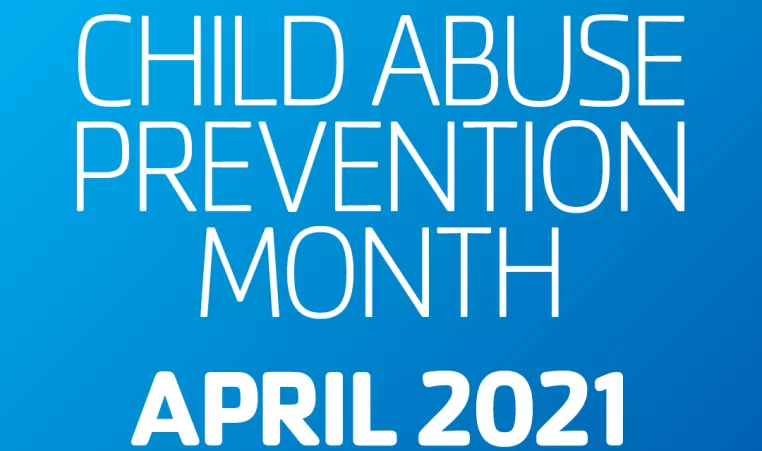
It’s Child Abuse Prevention Month, and all month long we’ll be providing tips and advice for parents and caregivers to help prevent and spot child abuse. Follow along all month!
Week 1: Darkness to Light Trainings
Learn about upcoming trainings from Darkness to Light about how to protect children during a crisis or how to prevent, recognize, and react responsibly to child sexual abuse. Check out the flyer about both trainings here.
Week 2: Recognizing Boundary Violations and Warning Signs
At the Y, creating safe spaces for youth to learn, grow and thrive is our top priority – especially following the effects of the COVID-19 pandemic. Kids need a safe space now more than ever, and we take pride in the measures we’ve taken to help keep your kids safe. Here are some important tips for parents to know as we work together to keep kids safe from abuse.
Offenders seek three things in order to abuse: access, privacy and control.
What does this mean for a parent?
- Know who has access to your children. For example,
- When your children are at school, what are the school’s procedures for screening staff, volunteers, parents, etc.?
- When your children attend a sleepover, who will be in the home?
- Know what type of privacy is allowed. For example,
- When your children play sports, can the coach be alone with a player?
- When camp is over, can the counselor text your child?
- When the program ends, is one adult ever alone with one child?
- Know how offenders gain control through boundary violations. For example,
- Physical boundaries violations - Excessive tickling, hugging, massaging, etc.
- Emotional boundaries violations - Spending too much time with them; acting possessive; sharing personal information to make a child feel they have a special relationship, sending excessive or inappropriate texts or messages
- Behavioral boundaries - Offenders manipulate kids into doing things they wouldn't otherwise do, such as: - Sneaking around - Keeping secrets - Looking at pornography - Use of drugs or alcohol
In response to the additional stressors added by COVID, Darkness to Light developed Protecting Children During a Crisis, an online training to help caregivers navigate through the unusual circumstances families may face during times of crisis. This change is any situation where you need to modify the steps you take to protect your children because of a situation that is out of your control. This training will help you consider your current strategies, help you identify the new situation, and help you change your strategy if necessary.
Week 3: Talking with Your Children About Abuse
Many parents and caregivers find speaking to their children about abuse to be uncomfortable. Framing these conversations around safety conversations you have may help you work through some of that uncomfortableness. Below you'll find age-appropriate ways to talk to your child about boundaries and preventing abuse.
Young Children
Parents can start these conversations simply by ensuring young children know the correct names for their body parts. Children who know the proper names are able to talk more clearly to parents or other adults if something inappropriate happens. As you're teaching body part names, you can help your child learn that parts of their body are private and that only their parents/caregivers can see them. Don't forget to note that doctors may see them naked, but only because you're there with the doctor!
Equally important is to teach children boundaries both for themselves and others. Boundaries have easily teachable moments, such as when a child doesn't want to hug a relative, or during a tickle fight a child yells "Stop!". Allowing young children to set their own boundaries teaches them body autonomy and helps them know when something makes them uncomfortable so that they can speak up.
Many abusers will tell a child to keep abuse a secret. It's important that children understand that adults should never ask them to keep a secret, and if they do, they should tell you.
Teens
As children grow older, it's key to keep lines of conversation open, so that they feel comfortable talking to parents or trusted adults if something happens to them or a friend. Talk to your teens about their friends, the other adults in their lives, social media, and electronic communication. They need to know not to accept requests from people they don't know, how to respond if someone (even a friend) asks them to send nude photos, and that conversations online are never truly private. Continue the conversations about boundaries and what boundary violations look and feel like. Let them know that you are there to listen and support them.
Week 4: Listening and Responding to Children
Throughout April we’ve addressed the importance of understanding the Y’s abuse prevention policies, recognizing red flags and boundary violations and how to talk with your children about abuse. Now, it’s important that all parents and caregivers know how to respond to boundary violations and warning signs if children tell you about abuse. At the Y, we are mandated reporters, so we have procedures in place for responding and reporting suspected abuse. As a parent, you can follow these 5 steps:
1. Keep your eyes & ears open
2. Talk with your child
3. Ask your child about any concerns you have.
4. If what you learn from your child or what you have observed/overheard sounds like abuse, call Child Protective Services or the police.
5. If what you've heard or observed sounds like a boundary violation, suspicious or inappropriate behavior, or a policy violation:
a. Share your concerns with the employee/supervisor/person in charge of the organization.
b. If you are unable to do this, make a report to the organization by making a call, sending an email, or submitting an online form.